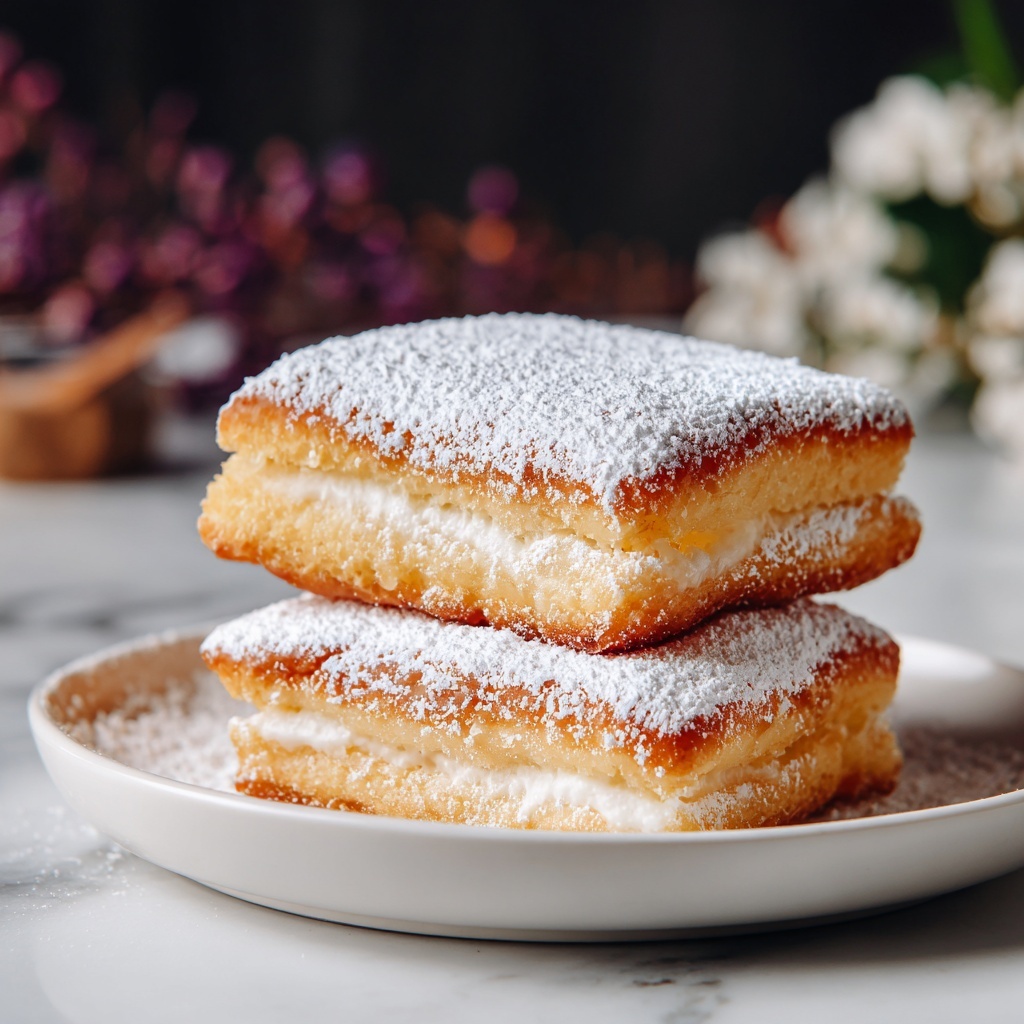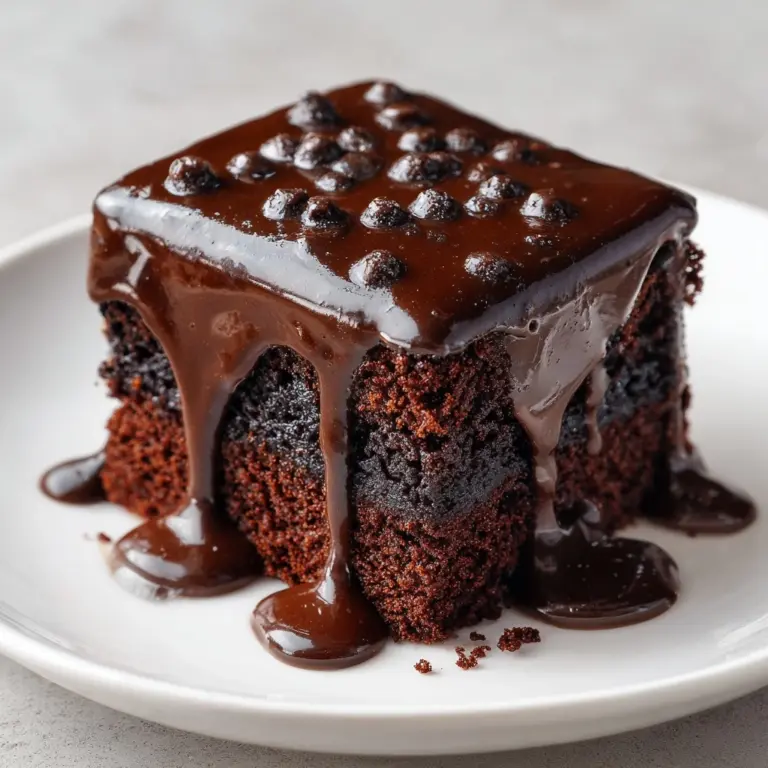Picture this: warm, pillowy clouds of dough, golden and dusted with a mountain of snowy powdered sugar, served alongside a fresh cup of café au lait. That’s the magic of Classic New Orleans Beignets. These irresistible sweets are deeply woven into the city’s heart and soul, inviting everyone to savor a taste of the French Quarter no matter where you are. Whether it’s your first beignet or your hundredth, every fluffy bite brings a little celebration—and making them at home is so much easier and more rewarding than you might think.

Ingredients You’ll Need
The beauty of Classic New Orleans Beignets is that their unforgettable flavor comes from simple, everyday ingredients. Each component has a key role, blending to create a treat that’s crisp on the outside, tender inside, and impossible to resist once crowned with sugar.
- Warm water (1 cup, 110°F): This gently heated water wakes up the yeast, giving your beignets their signature fluff.
- Granulated sugar (1/4 cup): Adds just the right touch of sweetness to balance the rich dough and caramelize beautifully as they fry.
- Salt (1/2 teaspoon): Essential for enhancing flavor and bringing out the delicate nuttiness of the fried dough.
- Large egg (1): Binds the ingredients together and lends richness to each tender bite.
- Unsalted butter (2 tablespoons, softened): Gives a subtle, buttery flavor and softness to the dough.
- Evaporated milk (1/2 cup): The secret to that creamy, rich texture—it makes a world of difference.
- All-purpose flour (4 cups): The backbone of the beignets, creating a sturdy yet delicate structure perfect for puffing while frying.
- Active dry yeast (2 teaspoons): This is what makes Classic New Orleans Beignets puff up and turn airy inside.
- Vegetable oil (for frying): Neutral in flavor and perfect for achieving a crisp, golden shell.
- Powdered sugar (for dusting): No classic beignet is complete without a generous snowfall of this sweet, melt-in-your-mouth topping.
How to Make Classic New Orleans Beignets
Step 1: Activate the Yeast
Begin by dissolving your yeast in a large bowl with warm water—think relaxing bath temperature, not hot tub. Let it sit for about five minutes, until it looks foamy and alive. That froth means your yeast is active and ready to work its magic on the dough. If you don’t see much action, try again with fresh yeast; it’s worth it for that classic rise.
Step 2: Mix in the Wet Ingredients
Once your yeast is frothy, add the granulated sugar, salt, egg, softened butter, and that all-important evaporated milk. Stir everything together until smooth. This mixture will become the rich foundation of your Classic New Orleans Beignets, promising flavor in every bite.
Step 3: Incorporate the Flour
Gradually stir in the all-purpose flour, just one cup at a time. The dough will start out sticky and shaggy, then transform into a soft, pliable ball. Don’t rush—let the flour get fully mixed in each time to ensure an even, bouncy texture throughout.
Step 4: Knead the Dough
Turn your dough out onto a lightly floured surface and knead for about five to seven minutes. You’ll feel it change beneath your hands, becoming smoother and more elastic. This step develops the gluten, which makes your beignets perfectly chewy inside.
Step 5: First Rise
Place the dough into a greased bowl, cover it, and set it somewhere cozy and warm. Let it rise and double in size—it’ll take about one to two hours. This slow rest is what puffs up the beignets and gives them their signature tenderness.
Step 6: Shape the Beignets
Once the dough is beautifully risen, punch it down to release that built-up air. Roll it out to about a quarter inch thick on a floured board, then cut into 2-inch squares. The precise sizing helps each piece fry up even and golden.
Step 7: Fry to Perfection
Heat a few inches of vegetable oil in your favorite deep skillet or Dutch oven until it reaches 350°F. Fry a few dough squares at a time, flipping after about one to two minutes. They’ll puff dramatically and turn gorgeously golden. Scoop them out with a slotted spoon and drain on paper towels so they’re perfectly crisp, not greasy.
Step 8: Dust and Devour!
Right while they’re still warm, heap on the powdered sugar until each Classic New Orleans Beignet looks like it’s had a little snow day. Serve them immediately for that fresh-from-the-French-Quarter bliss.
How to Serve Classic New Orleans Beignets

Garnishes
The only thing more iconic than the beignet itself is the mountain of powdered sugar on top. Don’t hold back—a thick, snowy blanket is traditional, but you can also add a scattering of grated lemon zest for a fresh citrus note, or a dusting of cinnamon for a subtle warmth.
Side Dishes
Classic New Orleans Beignets practically demand an accompaniment of strong, hot coffee, ideally a chicory blend or a creamy café au lait. For brunch, I love pairing them with a fresh fruit salad to balance out the sweetness and a pitcher of cold brew to keep things lively.
Creative Ways to Present
For a playful Crescent City-inspired table, heap stacks of beignets on a big platter and serve with small bowls of chocolate or berry dipping sauce. You can also skewer mini beignets on sticks for a whimsical party treat, or make a DIY sugar-dusting station so guests can finish their own with as much “snow” as they like.
Make Ahead and Storage
Storing Leftovers
If you somehow have leftover Classic New Orleans Beignets (a rare occurrence!), store them in an airtight container at room temperature for up to two days. They lose their crispness pretty quickly but remain soft and delicious for a day or two.
Freezing
You can freeze the fried (but undusted) beignets by arranging them in a single layer on a baking sheet until solid, then transferring them to a freezer bag for up to two months. When ready to enjoy, just reheat as below, then shower them with fresh powdered sugar right before serving.
Reheating
To revive your beignets, preheat your oven to 350°F and warm them for just five to seven minutes. They’ll perk up, regaining a bit of that fresh-from-the-fryer magic—perfect for a spontaneous treat!
FAQs
Can I make Classic New Orleans Beignets dough ahead of time?
Absolutely! Prepare the dough, cover it tightly, and let it rise in your refrigerator overnight. This not only makes timing more convenient but often leads to even puffier, more flavorful beignets in the morning.
Do I have to use evaporated milk?
Evaporated milk gives Classic New Orleans Beignets their rich, unmistakable flavor, but in a pinch, you can substitute whole milk for a slightly less creamy result. The beignets will still be delicious!
What’s the best oil for frying?
Vegetable oil is ideal because of its light flavor and high smoke point, but canola or peanut oil are also great choices. Just make sure the oil is fresh and consistently at 350°F for perfect puff and color.
How do I keep the beignets soft?
Beignets are best enjoyed fresh out of the fryer, but you can keep them soft for a little while by storing them in a loosely covered container once cooled. If reheating, pop them in the oven and then dust again with powdered sugar.
Can I make Classic New Orleans Beignets gluten free?
Yes, use a high-quality gluten free all-purpose flour blend. The rise and texture will be a bit different, but you’ll still get a soft, sugar-dusted treat worthy of the French Quarter!
Final Thoughts
These Classic New Orleans Beignets are pure joy wrapped in golden dough and powdered sugar. Don’t wait for a trip to Bourbon Street—invite the magic into your kitchen and treat yourself (and your loved ones) to this irresistible tradition. Trust me, your first homemade batch will make you feel like you’ve just experienced Mardi Gras in every bite!







